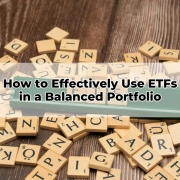What is an Investment Bond and How Does it Work?
Table of Contents
ToggleAn investment bond, also referred to as an insurance bond or a tax-paid investment, is a long-term investment structure offered by life insurance companies. These financial instruments are essentially a blend of a managed fund and a life insurance policy. Unlike direct investments where earnings are taxed at the investor’s marginal tax rate, investment bonds are taxed within the fund at a maximum of 30%—a significant advantage for investors in higher tax brackets.
In the Australian context, investment bonds offer a streamlined, tax-effective method of accumulating wealth over time, particularly appealing to those seeking an alternative to traditional superannuation strategies. The investment is made in the name of the bond issuer, and the investor is issued units. Returns can include interest, dividends, and capital gains—all
taxed within the bond. Investors are not required to declare earnings on their personal tax returns if specific conditions are met, a unique feature that enhances their appeal.
For many clients exploring retirement financial advice or seeking options outside superannuation, investment bonds can be a strategic solution. They are particularly useful for long-term savings plans, including education funding, intergenerational wealth transfer, or simply as a diversified investment vehicle.
Key Structural Features of Investment Bonds
The structure of an investment bond includes several distinct elements that make it a versatile option in financial planning Toowoomba. At its core, the bond is a non-superannuation investment vehicle that allows for multiple asset class exposure through managed investment options. The issuer, typically a life insurance company, legally owns the investment, but the bondholder retains beneficial ownership.
There are three main parties involved: the policyholder (investor), the life insured (usually the policyholder or someone else), and the bond issuer. The bond can be tailored to individual risk appetites, with a range of investment options from conservative to high-growth. Importantly, investment bonds are designed to be held for at least 10 years. If the investor adheres to this timeframe and meets the “10-year rule,” all withdrawals become tax-free.
This structure is further enhanced by features such as beneficiary nominations, estate planning benefits, and automatic reinvestment of earnings. It is this strategic design that positions investment bonds as a sophisticated tool for those working with a Toowoomba financial adviser
to achieve long-term objectives outside the super system.
Taxation Advantages and the 10-Year Rule
One of the most attractive features of investment bonds is their favourable tax treatment. Investment earnings within the bond—comprising interest, dividends, and capital gains—are taxed at a flat rate of 30%. For high-income earners, this can be significantly lower than their marginal tax rate, which can reach up to 47% including Medicare Levy.
What truly sets investment bonds apart is the “10-year rule.” If the bond is held for a minimum of 10 continuous years and no withdrawals are made during this period, all future withdrawals are entirely tax-free. Even if partial withdrawals are made before the 10-year mark, there are tapering tax concessions available:
- Withdrawals in the first 8 years: 100% of the earnings are assessable.
- Year 9: Two-thirds of earnings are assessable.
- Year 10: One-third of earnings are assessable.
- Year 11 onwards: No tax payable.
This favourable taxation model makes investment bonds highly effective for long-term wealth accumulation, particularly for individuals looking for retirement financial advice that is both flexible and tax-efficient.
Investment Bond vs. Superannuation: Key Differences
While both investment bonds and superannuation are tax-effective structures, they serve distinctly different purposes and operate under different rules. Superannuation is governed by the Superannuation Industry (Supervision) Act and is subject to contribution caps, preservation
rules, and complex conditions of release. It is also inaccessible until certain age or retirement milestones are met.
In contrast, investment bonds are not governed by superannuation laws. They have no annual contribution caps (beyond the 125% rule, which we will explore shortly), and the funds are accessible at any time, albeit with potential tax implications if withdrawn before the 10-year period. This makes investment bonds especially attractive for those who are already maximising their super contributions or who want access to their funds before retirement.
For clients seeking guidance from an online financial adviser, investment bonds can present a flexible alternative or complement to superannuation, providing asset diversification and access to capital without the same legislative constraints.
The 125% Rule: Maintaining Tax-Effective Status
Investment bonds have a unique contribution guideline known as the “125% rule.” Under this rule, an investor may contribute up to 125% of the previous year’s contribution each year without resetting the 10-year period. This ensures the bond remains eligible for its tax-free status after the initial 10-year holding period.
If an investor exceeds the 125% threshold or skips a year entirely, the 10-year rule resets, and the clock starts again. Therefore, consistency and discipline are critical when managing additional contributions to an investment bond.
This rule can be particularly valuable when used strategically as part of financial planning in Toowoomba, allowing individuals to scale their investments over time while preserving the tax advantages. For those with fluctuating income or large one-off bonuses, this flexibility can be woven into an overall investment strategy to enhance long-term wealth creation.
Who Should Consider an Investment Bond?
Investment bonds are best suited to individuals or families with specific long-term goals outside of superannuation. They appeal strongly to high-income earners seeking tax-effective investments, grandparents or parents looking to save for a child’s education, and retirees who need estate planning solutions with simplicity and tax efficiency.
They are also advantageous for those with life insurance or wealth protection needs, as the bond can provide a death benefit to a nominated beneficiary, often without the delays of probate. Importantly, investment bonds may also appeal to investors who value privacy, as earnings do not need to be reported on annual tax returns if the 10-year rule is met.
Working with a Toowoomba financial adviser, individuals can determine if an investment bond suits their financial circumstances, goals, and timeframes. The key lies in personalised financial modelling and long-term commitment.
Accessing Funds: Liquidity and Withdrawal Considerations
Although investment bonds are designed to be held long-term, they do allow for withdrawals at any time. However, early withdrawals may trigger personal tax liabilities on the earnings portion of the investment. It’s essential to understand that only the earnings portion of a withdrawal is
taxed—not the original capital.
Liquidity can be an important consideration, especially for individuals who anticipate needing access to funds before the 10-year mark. In this context, investment bonds may not offer the same level of liquidity as traditional cash investments or shares, but they do provide more flexibility than superannuation.
A well-designed financial strategy from an online financial adviser will assess when and how to draw down on the bond, helping minimise tax and maximise returns. For clients in transitionary life stages—like semi-retirement or starting a family—this flexibility can be incredibly valuable.
Estate Planning Benefits and Intergenerational Wealth Transfer
Investment bonds can play a powerful role in estate planning. As they are technically life insurance policies, proceeds are paid directly to nominated beneficiaries outside of the deceased estate. This means they are not subject to probate, providing quicker access to funds and potentially reducing legal disputes.
Furthermore, the policyholder can nominate children, grandchildren, or other individuals as beneficiaries, allowing for a smooth transfer of wealth. When structured correctly, the bond can even be transferred to another owner without incurring capital gains tax.
In an era where intergenerational wealth planning is increasingly critical, investment bonds offer an elegant solution. For those navigating financial planning Toowoomba or seeking robust succession strategies, investment bonds deliver both certainty and control.
Education Savings: A Strategic Tool for Children’s Future
Education costs in Australia continue to rise, with private schooling and tertiary education often placing significant financial pressure on families. Investment bonds offer a structured, long-term savings option to meet these expenses. Their tax-effective nature and ability to designate a child as a beneficiary make them particularly suited for this purpose.
Funds can be earmarked specifically for future school fees, university tuition, or even postgraduate studies. And because the earnings are not reportable on the adult’s tax return (when the 10-year rule is met), they don’t interfere with eligibility for government benefits or rebates.
Families engaging with a Toowoomba financial adviser can use investment bonds to create tailored education savings plans, aligned with each child’s anticipated schooling milestones and cost projections.
Investment Choices and Risk Management
Investment bonds offer a wide range of underlying investment options, from conservative income-focused portfolios to high-growth equity allocations. Most providers allow investors to switch between these options without triggering personal tax events—a benefit not available in many traditional investment structures.
This makes it easier to manage risk over time, particularly as life goals shift. For example, a high-growth allocation may be suitable in the early years, gradually transitioning to a more conservative position as the goal approaches—whether it’s retirement, a child’s education, or a legacy plan.
Risk profiling, ongoing reviews, and alignment with broader financial goals are key. That’s why engaging with a professional, such as an online financial adviser, ensures the bond’s investment settings remain appropriate over time and responsive to changes in market conditions or personal circumstances.
Regulation and Protections for Investors
Investment bonds in Australia are regulated by the Australian Prudential Regulation Authority (APRA) and fall under the Life Insurance Act. This offers a level of investor protection not always found in other investment vehicles. APRA ensures that providers maintain adequate capital reserves and comply with risk management standards.
Additionally, investors have the security of dealing with licensed life insurers who are subject to stringent reporting and governance obligations. While not guaranteed in the same way as bank deposits, the regulatory framework offers confidence for those seeking stable, long-term
investments.
These regulatory protections enhance the appeal of investment bonds for those prioritising security, transparency, and compliance as part of their broader investment strategy.
Conclusion
Investment bonds represent a compelling opportunity for Australian investors seeking flexible, tax-effective, and estate-friendly investment structures outside of superannuation. With the ability to support education funding, intergenerational wealth transfer, and retirement planning, they have carved out a unique position in modern financial strategies.
When tailored to individual goals and supported by sound advice from a Toowoomba financial adviser, investment bonds can become a cornerstone of long-term wealth planning. Whether you’re navigating complex tax issues, planning for your children’s future, or seeking diversified investment exposure, investment bonds offer structure and strategic advantage.
By leveraging this investment vehicle through a trusted online financial adviser, Australians can achieve clarity, control, and confidence in their financial future.









